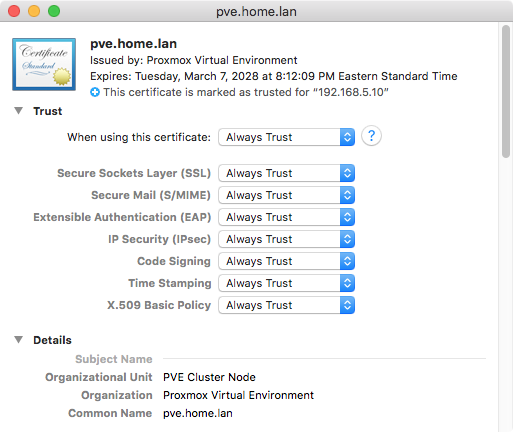I am doing development work. We have some test equipment that uses a self-generated SSL certificate. When I try to browse to the equipment in our lab, I get an error that "this connection is not private". However, the only 2 options available are "Show details" and "Go Back".
Show details just lets me look at the info on the certificate, which shows all of the expected self-signed details.
There is no way to tell safari to acknowledge the error and continue onwards. At least not obviously. How do I bypass this error and continue onwards? I'm using safari 11, on OS X sierra.

